The kitchen is where most of the activity takes place in the home. The family gathers there for breakfast and dinner, watching TV, discussing the latest news, children doing their homework, and adults working. Of course, one cannot fail to mention the most important thing - cooking. The process is lengthy, complex and not always neat. Steam, soot, oil and water splashes inevitably fall on all surfaces. This means that you need a coating that has a certain number of properties. If you are wondering what kind of kitchen tile for an apron you need, then this article will help you understand all the intricacies of choice.

Features and Benefits
An apron made of tiles in the kitchen, a photo of which is presented in various variations, is an integral part of each cooking zone. It fills the space that forms between the bottom line of the hanging cabinets and the top line of the worktop. The most popular option is to tile the apron.
Attention! Earned on our website kitchen designer. You can familiarize yourself with it and design your dream kitchen for free! May also come in handy
wardrobes designer.
So they began to do it back in Soviet times, because neither paint nor plaster saved from various household pollution. An interesting feature of this decor is the order of repair work. First, the tiles are laid out, the apron is formed, and only then the kitchen set and other furniture are put in place.
By making a choice in favor of designing a kitchen apron, you in no way push yourself into a frame. On the contrary, many interesting possibilities open up before you. You can make any design fantasy come true thanks to a huge selection of materials, sizes, textures, tile colors. This is facilitated by a large number of material manufacturers, among which there are both domestic and foreign companies: Spanish, Italian, Polish.

It is important to pay due attention to the seams between the tiles. To prevent liquids and crumbs from getting into the cracks, so that an environment favorable for the development of bacteria does not appear, it is necessary to fill the cavities with a special grout for seams. Fortunately, modern technology ensures the quality and durability of the putty. Otherwise, this problem can be solved with the help of a special rectified tile. In this case, the tile at the edges is very smooth, the joining is almost seamless (the distance is not more than 2 mm).
We can draw certain conclusions about the advantages of facing tiles for an apron:
- the strength of the material is resistant to loads of any level of severity;
- resistance to household chemicals and moisture ensures easy cleaning;
- heat resistance and frost resistance;
- hygiene;
- properties remain unchanged under the influence of direct sunlight and ultraviolet radiation;
- ease of replacement of fragments;
- great opportunities for creating decor and complementing the interior.
However, there are also disadvantages that cannot be ignored:
- high-quality porcelain stoneware tiles will be much higher in price than options from MDF or PVC, which are inexpensive, but do not last long;
- complex study of seams, protection of joints with the help of special means;
- time-consuming installation process, which requires not only skill, but also lengthy preparation.
Kinds
The apron differs in the types of tiles from which it is laid out:
- Standard. The backsplash tile for a classic kitchen is made in two sizes: 10x10 or 20x10 centimeters. It is most often standard in size, monochromatic, laconically decorated. A universal, budget option for any interior: it will look good both in retro and in the Mediterranean. Abounds in a variety of colors and textures: it can be glossy, matte, rough, convex.
- Mosaic. The more expensive and stylish option is made of ceramic or glass. By the way, glass tiles for the kitchen for an apron are more difficult to keep clean, stains remain on it. Unique drawings are created from small fragments on the wall. The pattern turns out to be beautiful, provided that a professional takes on the styling. Otherwise, the overall picture runs the risk of getting lurid and unnecessarily colorful. The mosaic design of the apron is suitable for interiors in ethnic, Greek styles.
- "Boar". This unusual name hides the quite usual shape of the tile: it is slightly convex, has beveled edges, and looks like small bricks. Most often found in sizes 10x20 and 15x30 centimeters. Correctly aligned styling geometry allows you to achieve an original effect. This tile looks good in Scandinavian, classic, loft and high-tech styles.
- Panel. The peculiarity of this type is that small fragments when stacked form a single picture. Such a composition consists of classic or mosaic tiles, looks good, being located under the hood. Most lay out images of animals or plants in this way, make up compositions of still lifes or landscapes. This design looks especially harmonious in the Provence style kitchen.
- Terracotta. This tile has a rich, deep color, capable of imitating any texture, but most often it is done under a tree or under a stone. It is increasingly used to decorate an apron, it makes the kitchen original. Looks great in loft style.
Materials (edit)
The division goes according to the material from which the apron is made:
- Ceramics. The most common, objectively the best option in terms of price / quality ratio. Looks great in any interior, suits any design, has a wide range of colors, a variety of shapes and textures.
- Glass. Effectively shimmers in the rays of the sun, the surface is glossy, matte, colored, transparent. Looks elegant as ceramic inserts. With the help of modern technologies, the glass is protected from mechanical damage, is not afraid of cracks and scratches.
- PVC. Not the most environmentally friendly and durable material. Not resistant to high temperatures and humidity, but the most affordable.
Colors and decor
Color solutions directly depend on the overall design of the kitchen. Think about which element you want to emphasize and which one you want to keep in shadow.
Something simple, unobtrusive, with a light pattern always looks good in a classic interior. White color gives the impression of purity, visually expands the room, shades of gray look more restrained and strict.
A bright yellow or orange set should be set off with a neutral apron. A delicate creamy coffee with milk will do. If the style is modern, leave matte or glossy tiles without a pattern, if more in the spirit of Provence, opt for ornaments.
If you want to make the kitchen bright, play with contrasts and successful combinations. Combine red with black and white, beige with grassy green or aqua. Depending on your ideas, the apron can serve as the brightest detail of the entire interior, focus admiring glances from guests, or it can remain a simple cover that performs practical functions. The most important thing is compatibility with the main design.
Dimensions (edit)
Obviously, the parameters of the room affect the choice of the size and number of tiles used. The width of the zone chosen for decoration, as well as the height of the ceilings, determine the installation of the apron. Large squares visually reduce the space, while small ones expand and enlarge. It is also important not to overdo it with mosaic patterns, so that your eyes do not ripple from one glance at the wall. Small tiles usually measure 2.5x2.5 centimeters, large tiles - 20x20 squares or 20x30 rectangles.
How to choose
The main parameters for choosing a tile:
- The embossed surface makes cleaning difficult, and dust can accumulate in the recesses.
- A protective layer on the surface prevents chemicals from entering the tile structure.
- The glossy surface is not only easy to clean, but also has the ability to visually expand the room.
- Products manufactured in one batch protect you from potential color differences.
- Before buying a tile, you should carefully examine it for cracks and chips.
- Painstaking work requires more payment, so the smaller the size of the tiles you choose, the larger the amount you will give to the installer for the work.
- Take tile samples home and see how it looks in your kitchen. The lighting may differ from that in the store.
- Choose the tiles so that they match the kitchen set.
DIY styling features
Putting an apron on your own is a time-consuming process, but not so difficult if you study the process and approach it in detail.
First, level and plaster the wall. Calculate the number of tiles, mark the markings, then put a layer of primer. At the bottom border, place a block of wood or metal, which will help to clearly define the area of \ u200b \ u200bthe area to be covered. Dilute the composition, apply it to the tile with a notched spatula, placing special dividing crosses in the places of future seams. Give your wall about a day for the glue to dry, remove the crosses and remove the glue adhering to the edges. Finish the seams by applying a moisture resistant grout with a rubber trowel. After drying, thoroughly but gently wash the entire surface. Done, now you can install the headsets.
How much is
The cost of the services of professional handlers depends on their personal experience and the complexity of the work offered. Basically, in Moscow, prices vary from 500 to 1000 rubles per square meter of tiles. The more unusual your design decisions and requirements, the more expensive the repair will cost you, which is quite logical.
Review of famous brands
The most difficult task now seems to be the final choice of your tiles among the variety of proposals. It is much easier to purchase it when there are so many stores where the products of various companies are presented. You can find it, for example, in the section on the Obi website, tiles for the kitchen; the apron in the future will be simple and pleasant to design.
The most famous brands that produce kitchen tiles:
- KERAMA MARAZZI - production takes place in Russia, modern technologies are used. The tile turns out to be not only of high quality, but also stylish, as well as relatively inexpensive;
- Keramin is a Belarusian factory whose products are popular not only in our country, but also abroad;
- Eqipe is a Spanish company whose tiles are found in many kitchens around the world;
- CEZAR - the famous Polish tiles are pleasantly pleased with the price-quality ratio. Style and adherence to fashion trends in the direction of kitchen design, as well as many colors and textures justify the high demand for products of this particular brand;
- Marazzi - Italian backsplash tiles are second to none on the international market. Aesthetic design solutions speak for themselves, and the high price is justified by the reliability and quality of the material.
Photo: tiles for the kitchen on the apron in the interior
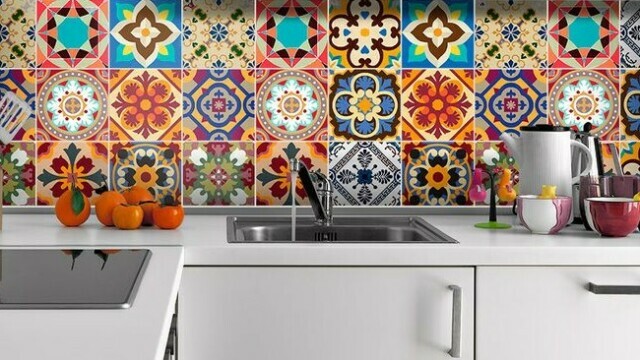
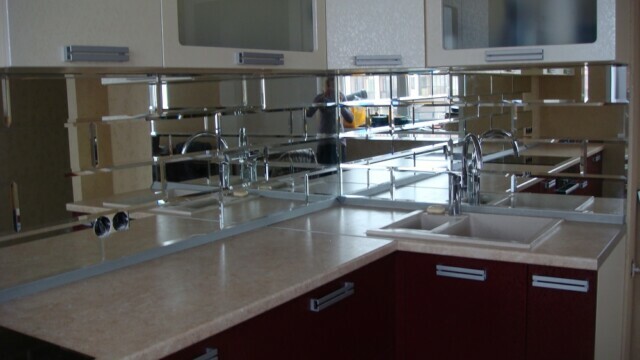
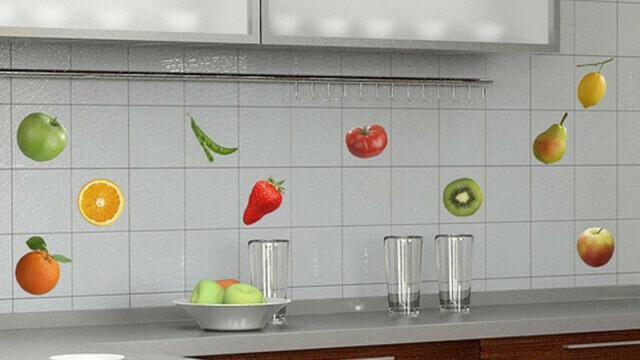
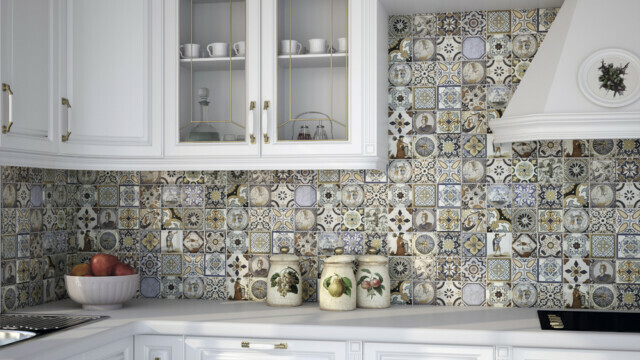
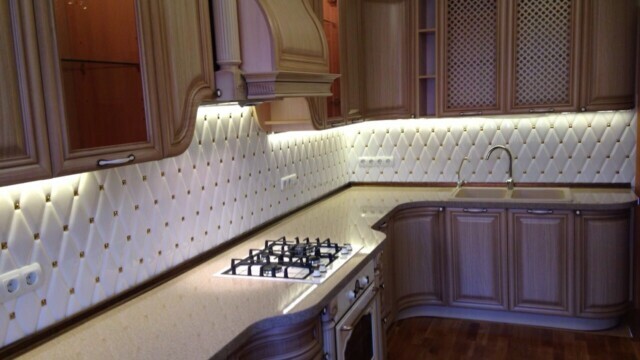
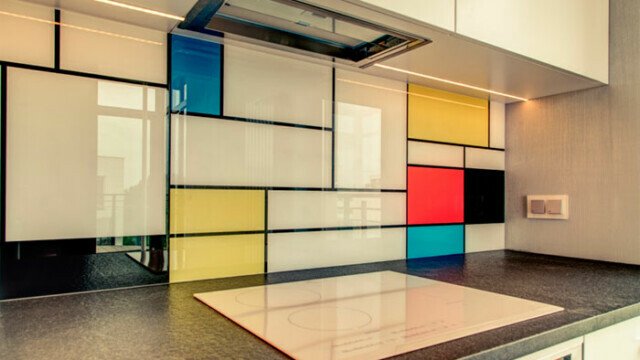
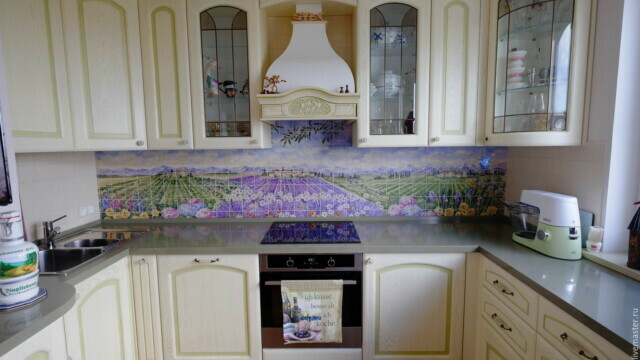
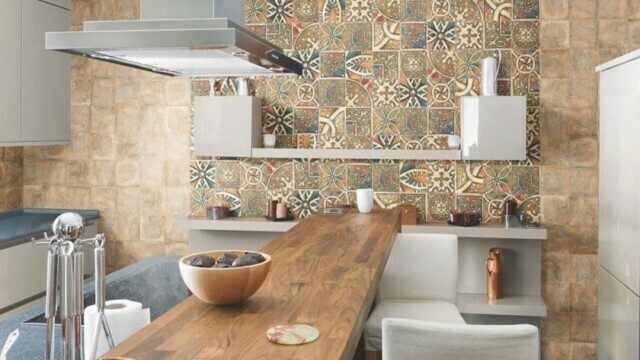
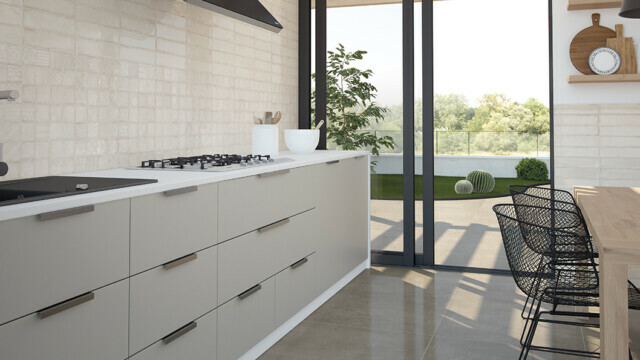
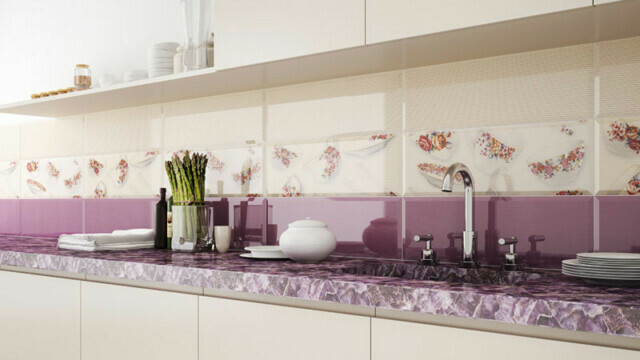

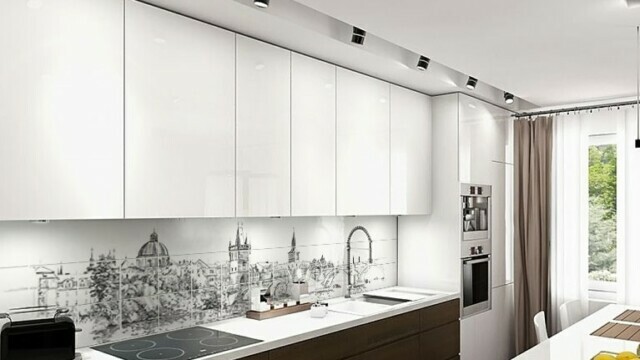
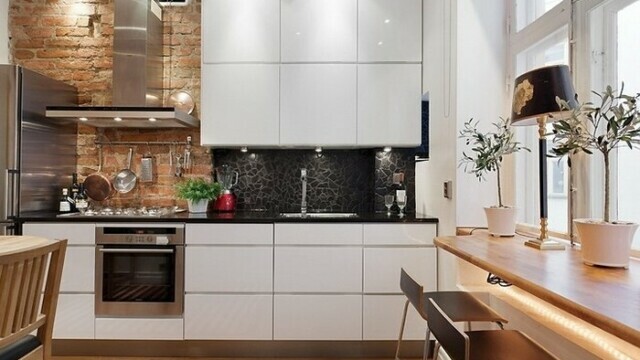
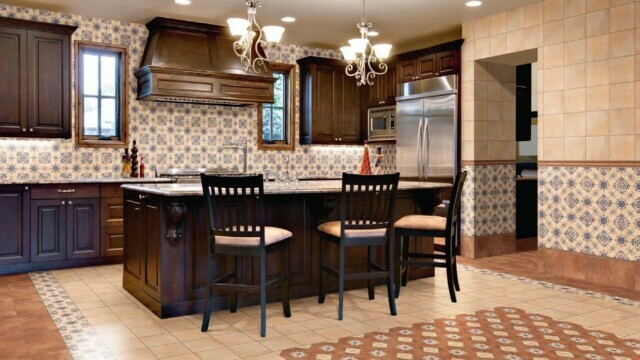
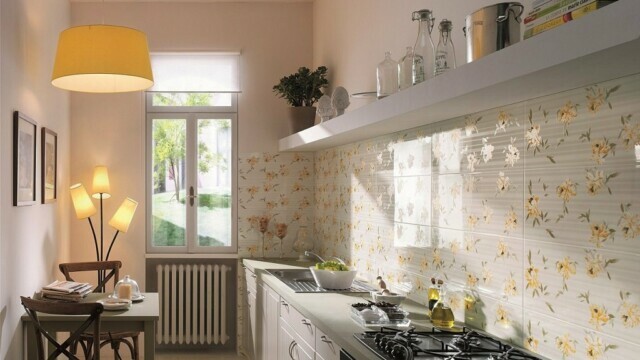
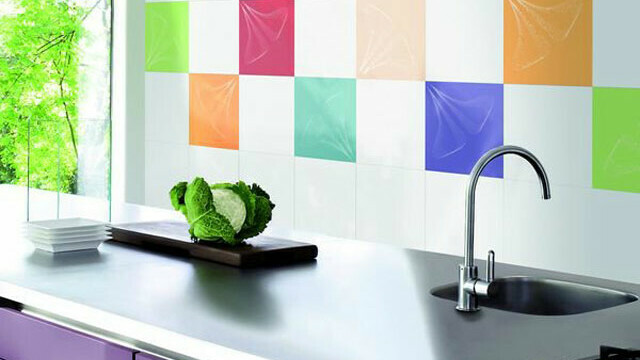
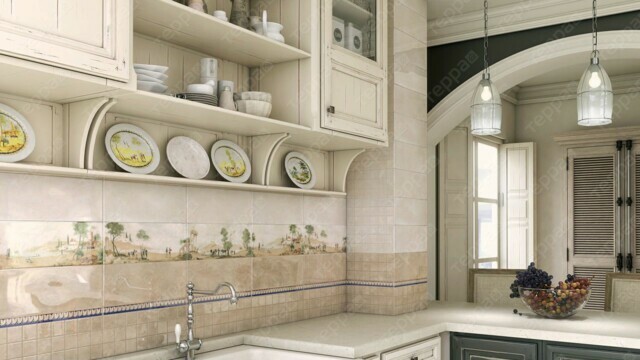

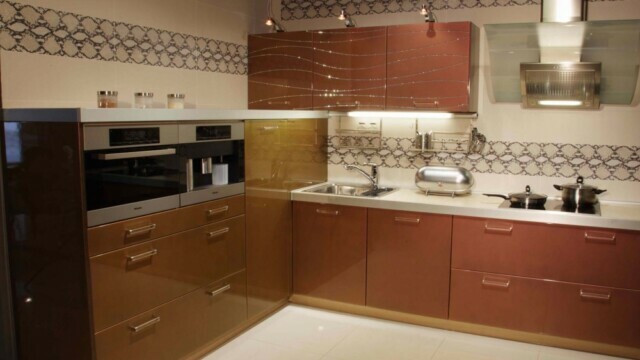
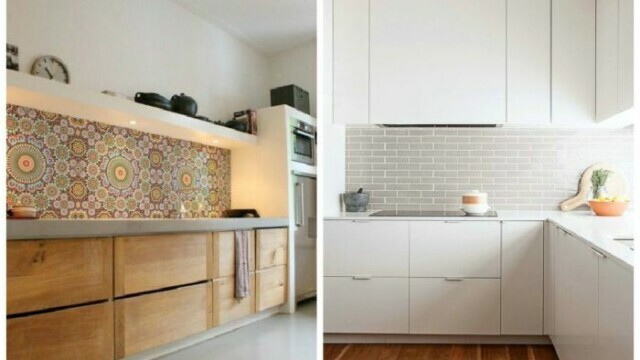
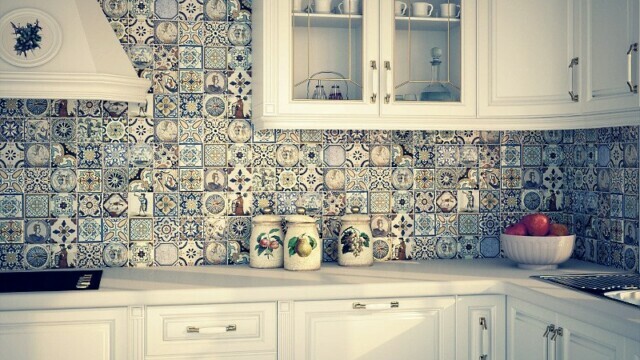

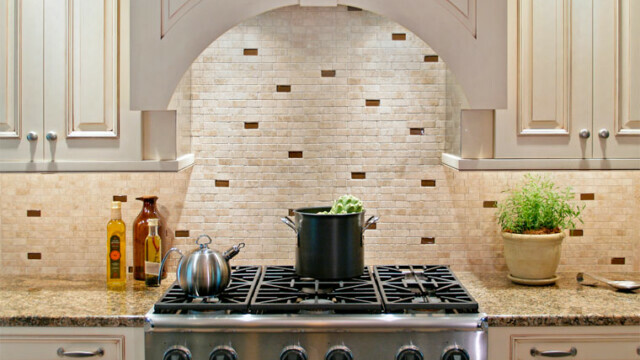
Prev
Next



